Sponsored content
Discovering the Auvergne-Rhône-Alpes region comes in many different flavours and is an adventure for everyone and all tastes.
You can hike, you can paraglide, you can canoe down the Ardeche river and you can explore the region's lakes on SUP. But undoubtedly one of the highlights of this area is to cycle it! With 2,700 km of cycle routes and walking and cycling paths, including 580 km of EuroVélo routes, 1,000 structures with the Accueil Vélo label and six major mountain bike crossings, the region welcomes all cyclists, bikers and keen sportspeople.
The region is also home to several UNESCO world heritage sites, an incredible range of cuisines, and several of France’s most famous wines – including Côtes-du-Rhône and Beaujolais. In short, it’s hard to imagine a better place for an active holiday. And whether you're riding a mountain bike or an electric bike, there’s no better way through the Auvergne-Rhône-Alpes than cycling the ViaRhôna.
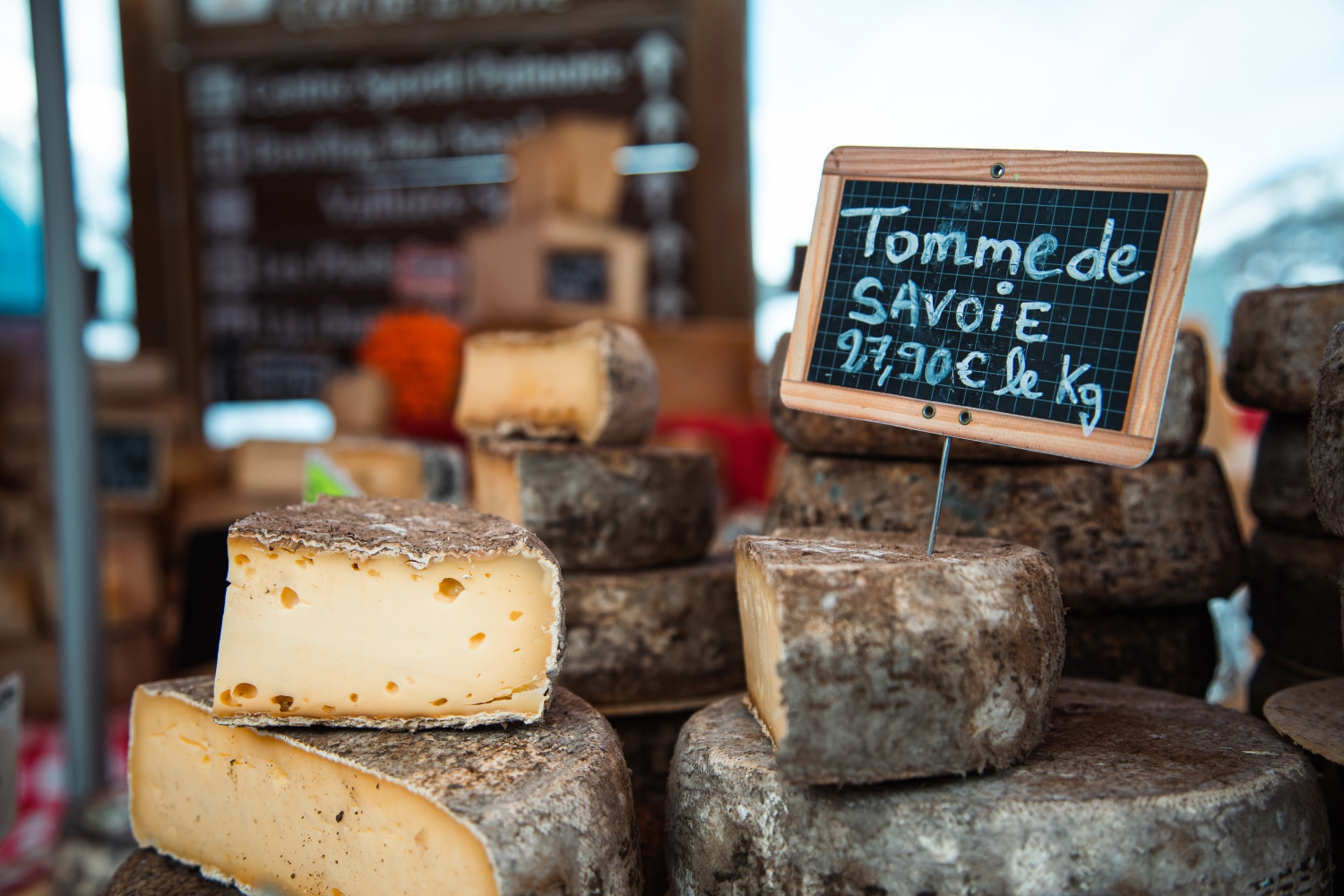
Where is Auvergne-Rhone-Alpes?
Auvergne-Rhône-Alpes, in the south east of France, just north of the Provence and the French coastline, feels like one vast adventure playground. Created in 2014, when the two regions merged into a single administrative entity, the area stretches from the Swiss border to the western edge of the Massif Central, and encompasses much of the country’s most spectacular mountain terrain.
The main gateway airports for visitors from the UK are Grenoble, which is 53 km away, Lyon (57.3 km), and Geneva (152.8 km). alternatively, it's an eight-hour drive from Calais. There is no direct train service from the UK, but you can take the Eurostar from London to Lille or Paris, and then there are regular services to towns and cities in the region.
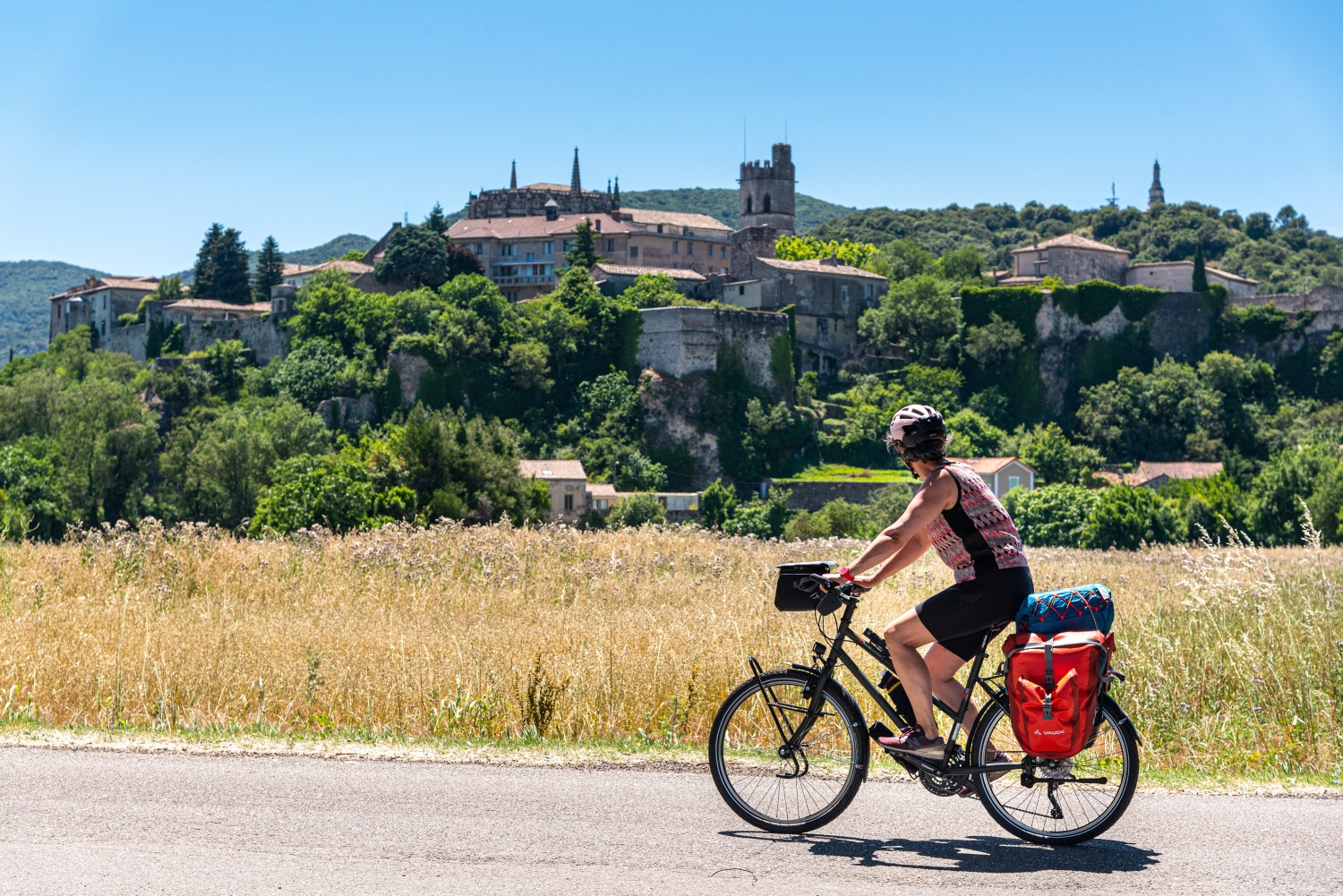
Riding the ViaRhôna: A Cycle Route for Everyone
Rhône Alpes cycling offers many opportunities to explore, such as the Via Fluvia greenway, along a former railway line, that zigzags around the rounded old volcanic tops, but one of the best bike routes in the Auvergne-Rhônes-Alpes is the ViaRhôna cycle route.
Running through the heart of the region, this classic ride for cyclists follows its namesake Rhône river from the Alps to Provence. At 815 km long, it travels through a wide variety of different landscapes, from alpine pasture to Mediterranean beaches, and connects many of Auvergne-Rhône-Alpes’ most celebrated sights. A large part of the ViaRhôna runs down the Vallée de la Gastronomie® which stretches from Dijon to Marseille through Burgundy, Beaujolais, Lyon and Provence steps. Follow it, and you’ll have a chance to sample the full range of flavours – both literal and metaphorical – that make this region so special.
Like all long distance cycle routes, the ViaRhôna is designed to be tackled in stages. Each offers something unique, and there are detailed maps on the dedicated website. Because it runs along the river, the cycle path is largely flat, meaning it’s perfect for people of all ages and fitness levels.
Starting on the French-Swiss border town of Saint Gingolph, the ViaRhôna runs along the southern shore of Lake Geneva. You’re just a stone’s throw away from Morzine, site of some of the most gruelling climbs on this year’s Tour de France, yet the route here offers easy riding, flanked on one side by the dark waters of the lake, and on the other by the majestic French Alps.
The alpine views continue as you follow the river south from Geneva, through the ancient trading post of Seyssel, before turning westwards towards Lyon. With its stunning old town, and a Roman-era amphitheatre that’s still used for performances today, the city is a UNESCO World Heritage site. Among French people, however, it’s perhaps best-known for its food. In a country full of gourmands, earning such a reputation is no mean feat. But from L’Auberge du Pont de Collonges, the multi-Michelin star restaurant founded by the legendary Paul Bocuse, to the humble bouchons (or worker’s cafés) of old Lyon, the cuisine here is truly spectacular.
Once you’ve had your fill of history, culture, and of course, food, the ViaRhôna will lead you out of town southwards, where the landscapes take on a more southern French feel, with lavender fields and olive groves sweeping down from perched villages. There’s more Roman architecture to be enjoyed in Vienne, with its Temple of Augustus, and an ancient theatre which plays host to one of Europe’s most prestigious jazz festivals each July.
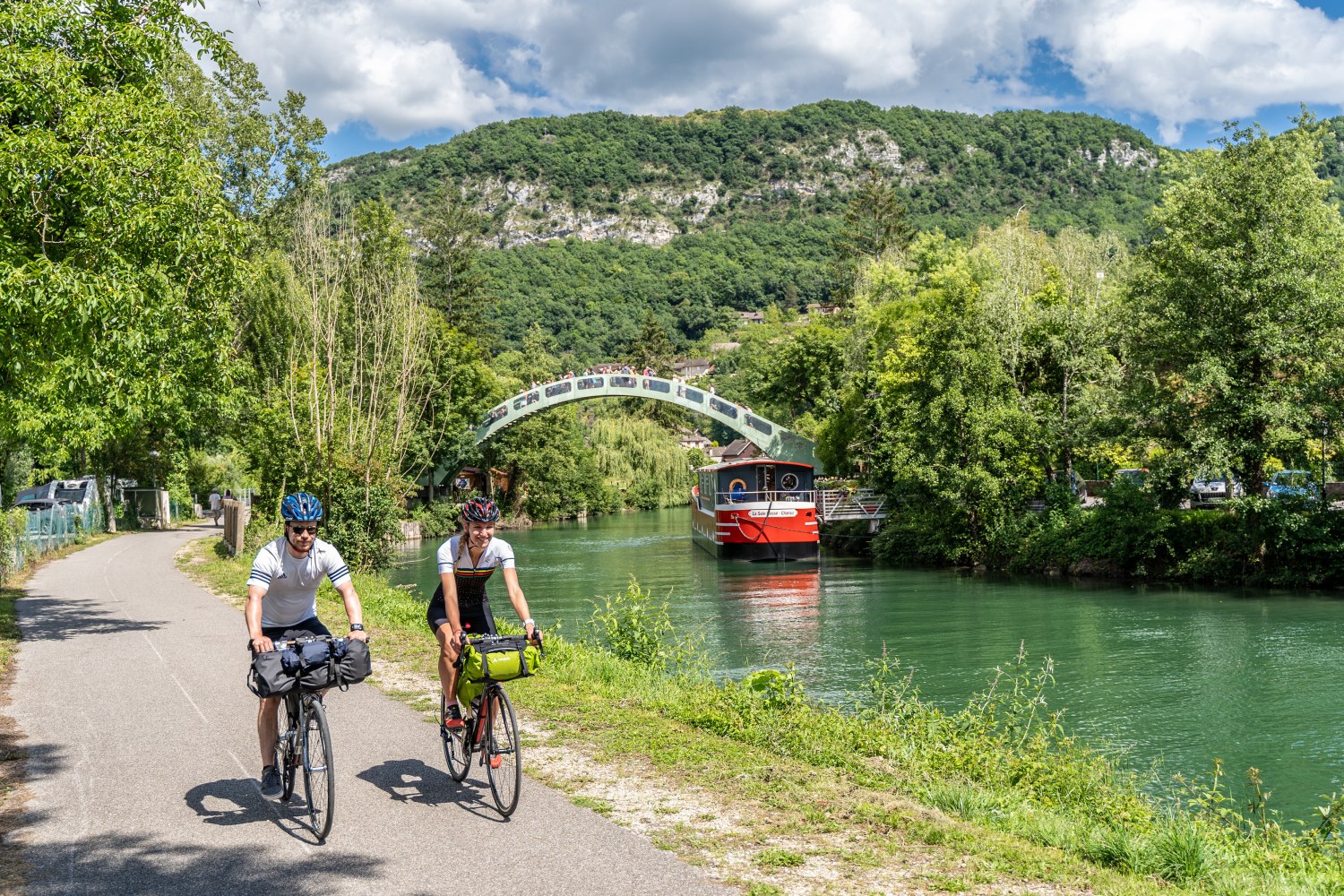
In Avignon, you can dance on the famous bridge, wander through medieval streets, and visit the palace where Popes lived for most of the 14th Century. It’s worth taking the time to stop and snap a few pictures in Arles too—a city famous for the quality of its light and its annual photography exhibition. The route of the Rhône has been touched by every era of French history. From the Abbey of Saint-Gilles, to the Chateau Tarascon, to the crusader port at Aigues-Mortes, each century has left its mark.
As you travel further south, you’ll notice changes to the cuisine too. There are different grape varieties being grown, and subtle changes to the local cheeses, for example. The firm cow-milk tommes that you find in Savoie, become softer tommes, made from goat’s milk, as you get down into Provence.
By the time you reach the end of the ViaRhôna, in Sète, both the landscape and the food are worlds away from what you’d find at the start: you’ll have swapped soaring alpine peaks for sandy beaches, and pungent cheese fondue for fruits de mer. What doesn’t change, however, is the quality of the cuisine, or the cycling. The river too is a constant, providing a stunning route through Auvergne-Rhône-Alpes, and connecting the region’s present with its fascinating past.
5 Other Activities to Try in Auvergne-Rhône-Alpes
As well as cycling, there are other ways to explore the Auvergne Rhône Alpes.
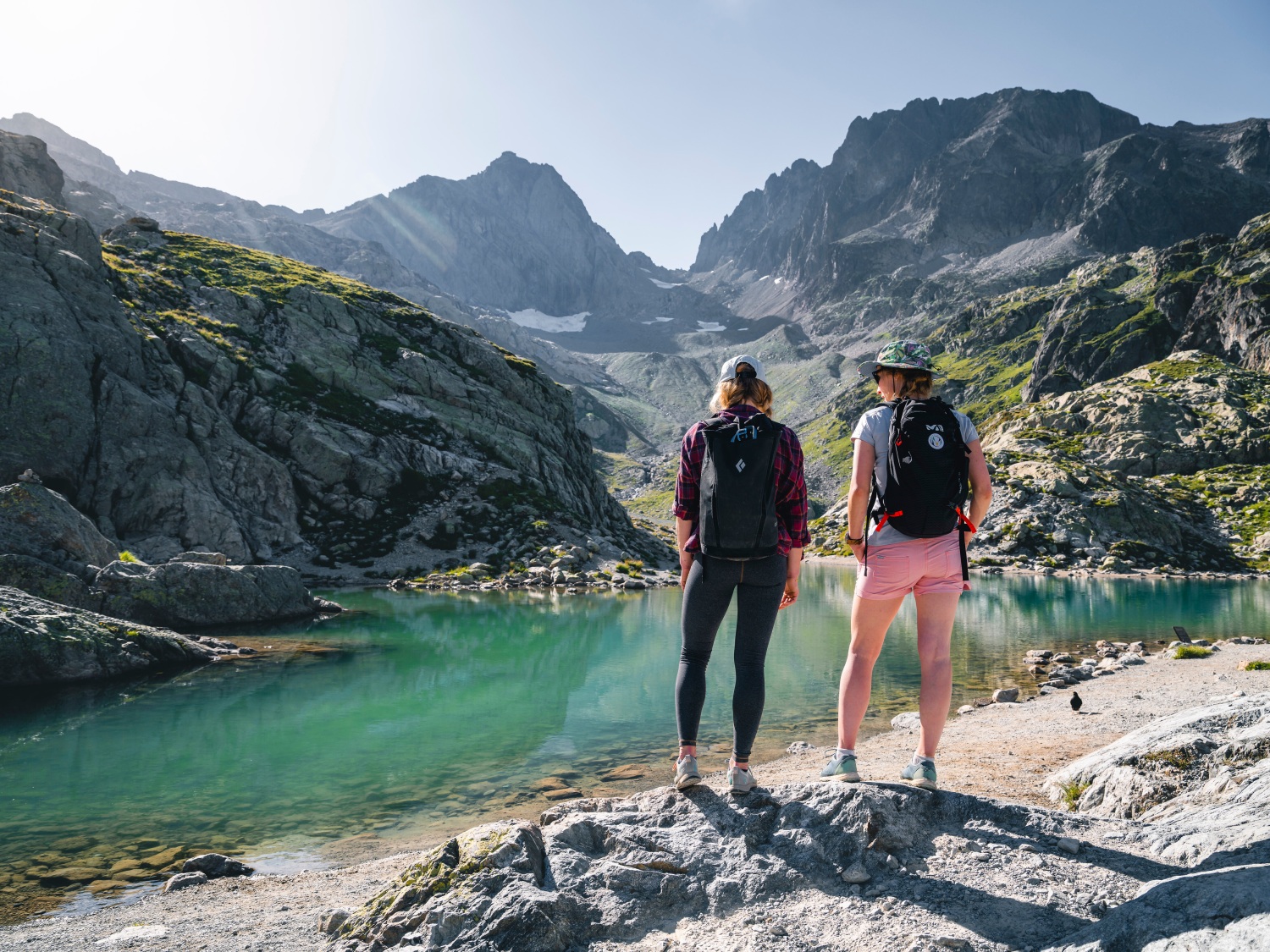
Walk the Long Distance GR30 Trail in the Auvergne-Rhône-Alpes
If you're happier on two feet than two wheels, there are 31,000 km of marked and maintained hiking trails crossing the Auvergne-Rhône-Alpes in all directions! From the highest alpine peaks to the volcanic lands of Auvergne, they weave their way through the valleys and the massifs of Vercors, Chartreuse, Bauges, Aravis or Cantal.
The region is a wonderful walking destination, with great mythical routes such as the Tour du Mont-Blanc, the pilgrimage route of Saint-Jacques de Compostelle or the path of the Huguenots – 29 stages following their 17th century journey of exile from France to Switzerland and Germany. To walk this itinerary is to retrace a part of European history, as well as experience spectacular nature from the Drôme Provençale towards the alpine mountains.
Top of the list for walking in the Auvergne-Rhône-Alpes is the Grande Randonnée® 30 (GR30) which connects many of the most spectacular peaks and lakes of the Massif Central, into one massive, 198 km loop. Dipping in and out of the Auvergne Volcanoes Regional Park, this epic trail usually takes around 10 days to complete.
Shaped by volcanic activity, the numerous lakes of Auvergne are an integral part of the identity of the territory. You'll discover volcanic dam lakes such as Lake Chambon, where you can swim and indulge in water sports or Lake Aydat, the largest natural lake in Auvergne. There are also lakes of glacial origin such as Lac du Guéry, the highest lake in Auvergne, or crater lakes (the maars) such as Servières or Pavin.
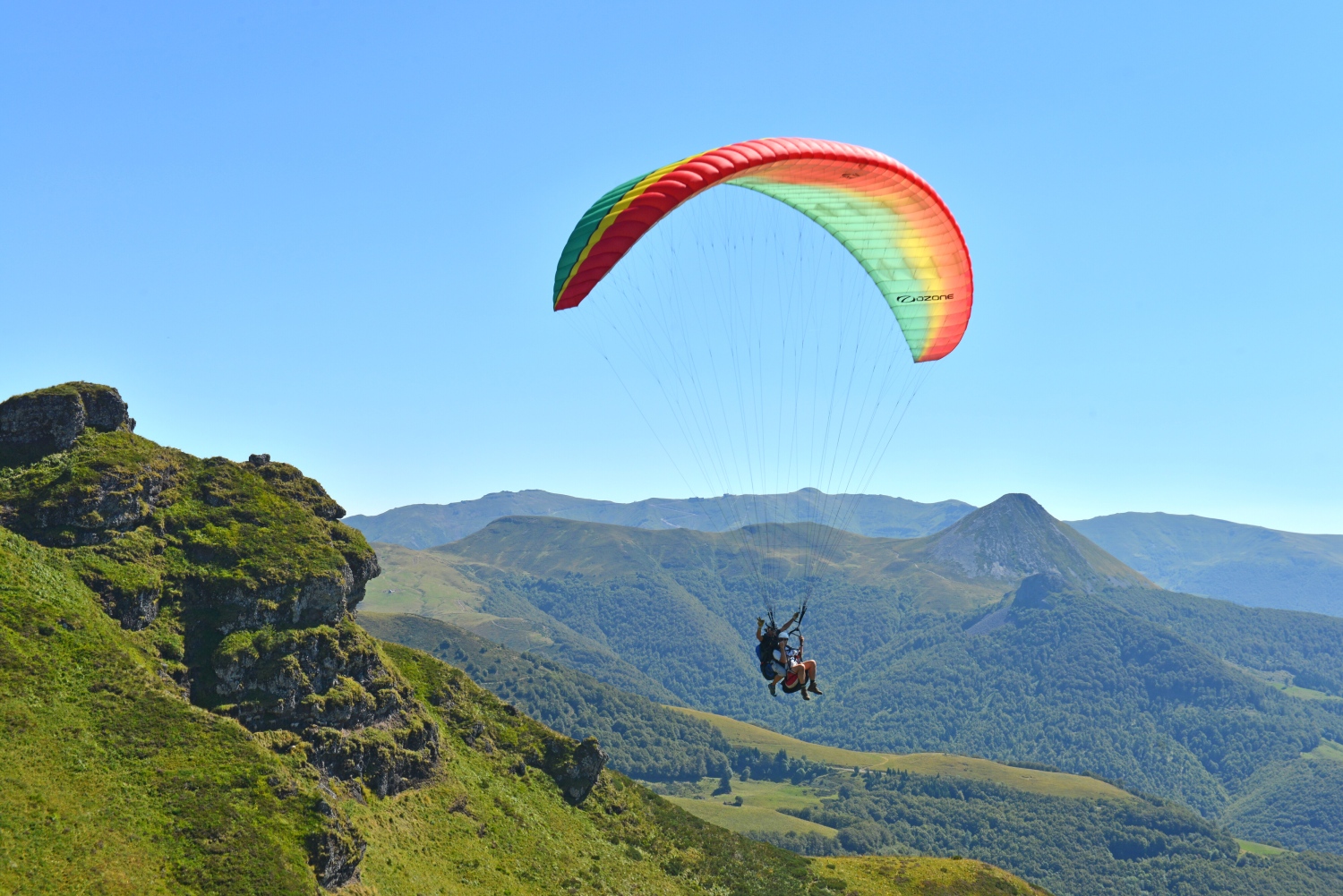
Paraglide Over the Cantal Volcanoes
An Auvergne-Rhônes-Alpes experience with a difference: if you prefer to view your volcanoes from the air, try tandem paragliding over the Monts du Cantal. Made up of the remains of Europe’s largest stratovolcano, the craters here have been extinct for 2 million years, but still inspire awe in all who see them – especially from above. Solo flights for advanced flyers or tandem paragliding (with a qualified instructor), take you up close to the volcanoes of the Chaîne des Puys and its highest point, the Puy de Dôme, classified as a UNESCO World Heritage Site in 2018.

Canoe Down the Gorges de l’Ardèche
With its craggy cliffs and swirling rapids, the Ardèche River Gorge is one of the most scenic canoeing spots in Europe. Two great options are either a one-day trip (7 hours of canoeing) or a two-day adventure with an overnight camp, either on your own or with a guide. The trip starts near Vallon-Pont-d'Arc, giving you a great opportunity to admire the natural arch that goes over the Ardèche at a height of more than 50m. The route goes on for 32 km to Saint-Martin d'Ardèche. Along the way you'll be sliding, shooting rapids, enjoying swimming breaks, and picnics on the banks.
Discover the awe-inspiring wonders of the Chauvet Cave, a treasure trove of prehistoric art! Step back in time as you marvel at the mesmerizing cave paintings, dating back over 30,000 years. Immerse yourself in the magic of ancient history and witness the artistic genius of our ancestors.
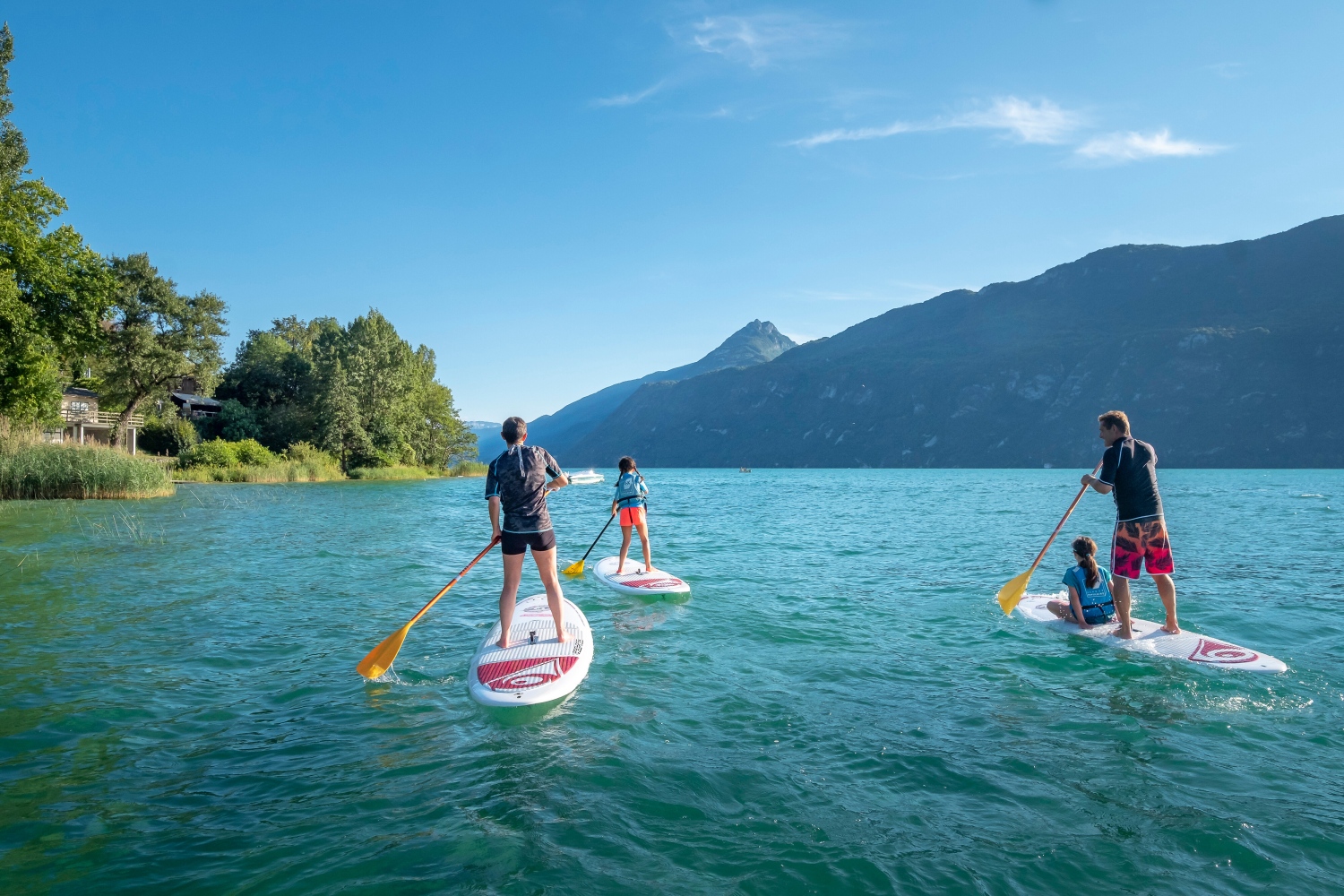
SUP on Lake Bourget
Auvergne-Rhône-Alpes is not short on stunning lakeside scenery, and Lake Bourget is among the best. Rent SUPs in the pretty spa town of Aix-les-Bains and paddle across to the Hautecombe Abbey, which served as the burial place of the Royal House of Savoy for centuries. Alternatively, discover the castle of Duingt from Lake Annecy, the resort of Thonon-les-Bains on the shores of Lake Geneva, or enjoy the calm waters of Lake Aiguebelette.
Glacier Hiking on Mont Blanc
The many glaciers and peaks in the Alps makes it an ideal – and accessible – environment for glacier trekking with various activities offered from mid-June to September to explore the world of rock and ice.
The Mer de Glace, the glacier which cascades down the northern slopes of Mont Blanc, is still majestic, but these days vividly illustrates the effects of climate change. Hiring a guide and getting up close to this natural wonder is a stunning – but sobering – experience. You'll do so roped up with a mountain guide, using crampons, ice axe and harness for a truly spectacular day that leads to the Moulin, a very surprising ice canyon.
For more information about visiting this great mountan region, go to auvergnerhonealpes-tourisme.com






















